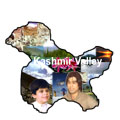|
|
Tourism
in Zanskar
Zanskar,
the region between Kishtwar and Manali in the south and Kargli
and Lamayuru in the north is ideal for trekking. Surrounded
by the main Himalayas on one side and the Zanskar Range on the
other, it is the most remote district of Ladakh. Few inhabited
valleys in the world are so isolated.
You won't find many hotels in Zanskar but neither will you find
the military installations and soldiers so common in the rest
of Ladakh. The most you'll come across is a mounted patrol or
pony caravan of the Jammu & Kashmir Police. As for foreigners,
they are still few and far between in this 'off the beaten track'
Himalayan valley.
Padum, the capital of Zanskar has a population of about one
thousand people, of whom about 450 are Muslims. Padum has several
hotels, a few shops and a tourist office.
History
Zanskar became an administrative part of Ladakh under Senge
Namygal. He had three sons whom he installed as rulers of Ladakh,
Guge, and Zanskar and Split, respectively.
After Ladakh's war with Tibet this order gradually fell apart
and Zanskar's royal families split, one side assuming jurisdiction
of Padum and the other of Zangla. This continued until the Dogra
times when both families were reduced to having only nominal
powers. This was a period of great unrest in Zanskar and the
records testify to wholesale destruction of many of the villages.
Thereafter Zanskar's political history was again very much intertwined
with Ladakh.
Geography
Zanskar consists of two populated valleys, the Stod (Doda Chu)
and Lunak (Tsarap Chu), which converge below Padum, the capital.
The Zanskar River flows across the plains from Padum to Zangla,
where it penetrates the huge Zanskar range en route to the Indus,
creating some of the most spectacular gorges in the Himalayas.
|

